Search
Using the filters to the left, click your selection, it will become bold and filter the results, click it again to remove that filter.
In order to influence where religious feelings are strong, a deep understanding of the faiths is necessary, Dr Marigold Black writes. In the future, no American ambassador should be assigned to a country where religious feelings are strong unless he or she has a deep understanding of the faiths commonly practiced there … The State Department should hire or train a core of specialists in religion to be deployed both in Washington and in key embassies overseas. — Madeline Albright, 2006 (This article has …

A discussion on the Australian Army use of Anti-Tank landmines and the future Landmines are weapons that deliver some of the most decisive military effects employed in military history. They are effective but controversial weapons that have been employed successfully, but sometimes ruthlessly, in warfare for more than a century. The reason that they are so effective is that they modify the behaviour of combatants and populations in their primary role of denying terrain. Their misuse is deplorable, …
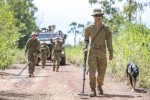
As a Catholic Military Chaplain, I have always felt a deep-seated desire to go on a pilgrimage to Lourdes at the foot of the Pyrenees Mountains in France, or Fatima in Spain; both sites of Marion apparitions. When I found out that 2018 was the 60th anniversary of the military pilgrimage to Lourdes, a pilgrimage for military personnel initiated by the Knights of Columbus in 1958 but with its origins during WW1, my wife and I began planning to go on this pilgrimage. We were then able to join in with the …

After the Vietnam War, the term Post Traumatic Stress Disorder (PTSD) has become a recognised condition affecting individuals who have been involved in an extremely traumatic experience, causing them ongoing distress and anxiety. Whilst PTSD is a known condition and understood on a very basic level in the general population, there is a risk that it is becoming a catch-all diagnosis to describe a number of mental health issues that are attributed to those individuals who witness or participate in …
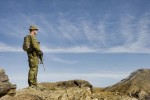
To understand technological change, look for the enduring patterns and concepts When Facebook was launched almost 15 years ago with a goal of connecting people, no one could have imagined that it would have become a tool for spreading hate speech or undermining elections. Yet this is precisely what happened. This was greatly amplified by the birth of the iPhone a few years later—with its encryption, portability, and the selection of downloadable social media ‘apps’. While these problems have been evident …
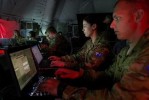
Warfare transcending all boundaries and limits is termed: unrestricted warfare. This kind of war means the focus is in readiness, information is omnipresent, and the battlefield is everywhere. It means all weapons and technology can be superimposed at will, it means all boundaries lying between the worlds of war and non-war, military and non-military, will be destroyed, and it means that many of the current principles of combat will be modified, and even that the rules of war may need to be rewritten. [1] …
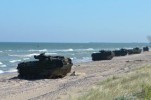
The recent news that North Korea is on a fast-track to develop nuclear-armed ICBMs that could reach downtown LA should not come as a surprise to anyone. Pyongyang has been working single-mindedly toward making this possible for a number of years. Despite being a US priority since the Nixon Administration, the ability of the US and other actors throughout the West to influence North Korean actions has been relatively futile; the use of sanctions, threats, military exercises and placing pressure on China has …
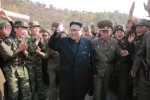
The projection of policing on the modern day battlefield is something that has been recognised as a necessity for many years. The requirement for immediate law enforcement activities and imposition of the rule of law at the end of conventional operations is regarded as something that goes hand in hand with security and stability of a region [1] . Often, Civilian or indigenous Policing elements are rarely in a position to assist at the tactical level of operations, and if they are, they are barely in …
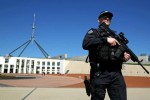
Victory smiles upon those who anticipate the change in the character of war, not upon those who wait to adapt themselves after the changes occur — Giulio Douhet Since the establishment of the Australian Army, soldiers have combined tools and tactics to dictate tempo, influence perceptions, impose fear and anxiety, as well as innumerable mediums to defeat the adversary or achieve mission objectives. As we navigate to the future, the Australian Army should consider adapting to meet the new challenges of a …

Note: The author attended the Australian Army Research Centre’s (AARC) 2017 Vietnam Staff Ride focussed on the Battle of Dien Bien Phu. Participants on the staff ride were Captains and Majors identified through their performance on the Combat Officers’ Advanced Course (COAC) and Logistics Officers’ Advanced Course (LOAC). Introduction The failure of logistics and combat service support during the Battle of Dien Bien Phu contributed to the devastating defeat of the expeditionary French military in May 1954. …

